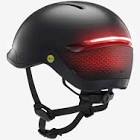
Bluetooth Helmet: Revolutionizing Motorcycle Communication
In recent years, technology has made significant strides in improving various aspects of our lives. One such advancement is the introduction of Bluetooth helmets, which have revolutionized the way motorcyclists communicate and interact while on the road. This innovative piece of gear combines safety, convenience, and connectivity like never before.
Gone are the days when riders had to rely on hand signals or shouting to communicate with fellow riders or passengers. Bluetooth helmets have changed the game by integrating wireless communication technology directly into the helmet itself. This allows riders to stay connected with ease, enhancing both safety and enjoyment during their rides.
One of the key benefits of Bluetooth helmets is their ability to facilitate seamless rider-to-rider communication. With built-in intercom systems, riders can now communicate with each other in real-time without having to take their hands off the handlebars or remove their helmets. Whether it’s coordinating group rides, sharing important information about road conditions, or simply enjoying a conversation while cruising together, Bluetooth helmets make it all possible.
Moreover, these helmets also enable easy communication between rider and passenger. Gone are the days when passengers had to shout or tap on the rider’s shoulder for attention. With Bluetooth connectivity, clear and uninterrupted conversations can take place between rider and passenger at any time, ensuring a more enjoyable riding experience for both.
But Bluetooth helmets offer more than just communication capabilities. Many models come equipped with additional features that further enhance convenience and safety. For instance, integrated GPS systems allow riders to receive turn-by-turn directions right in their helmet without having to rely on external devices or distractions. This keeps riders focused on the road ahead while still being guided accurately.
Another notable feature is music streaming capability. With built-in speakers and microphone systems, riders can listen to their favorite tunes or podcasts directly from their helmet without compromising safety. This eliminates the need for separate headphones or speakers that might hinder situational awareness while riding.
Safety is of paramount importance for any motorcyclist, and Bluetooth helmets prioritize this aspect as well. Many models include advanced features such as noise-cancelling technology, which filters out external noise and ensures clear communication even in noisy environments. Additionally, some helmets are equipped with emergency calling systems that can automatically alert designated contacts in the event of an accident or emergency.
As with any technological advancement, it’s crucial to choose a Bluetooth helmet from reputable manufacturers that meet safety standards and regulations. It’s also important to familiarize oneself with local laws regarding the use of communication devices while riding.
In conclusion, Bluetooth helmets have transformed the way motorcyclists communicate on the road. By seamlessly integrating wireless connectivity into a vital piece of safety gear, these helmets not only enhance communication between riders and passengers but also provide added convenience and safety features. With their ability to keep riders connected while maintaining focus on the road ahead, Bluetooth helmets have become an indispensable tool for modern motorcyclists. So why not embrace this technological marvel and experience the next level of motorcycle communication for yourself?
Frequently Asked Questions about Bluetooth Helmets: A Comprehensive Guide
- What is a Bluetooth helmet?
- How do I connect my Bluetooth helmet to my phone?
- How long does the battery last on a Bluetooth helmet?
- Are there any safety features on a Bluetooth helmet?
- Is it easy to use a Bluetooth helmet?
- Are there any special features of a Bluetooth helmet that make it stand out from other helmets?
What is a Bluetooth helmet?
A Bluetooth helmet is a type of motorcycle helmet that incorporates wireless communication technology, specifically Bluetooth, into its design. It allows riders to connect wirelessly with other riders, passengers, or compatible devices such as smartphones and GPS systems.
Bluetooth helmets typically feature built-in speakers and microphones, allowing for hands-free communication while riding. They enable riders to make phone calls, listen to music or GPS instructions, and communicate with fellow riders or passengers through intercom systems.
These helmets utilize Bluetooth technology to establish a wireless connection between the helmet and other devices. This connection enables riders to stay connected without the need for wires or external communication devices. The range of connectivity varies depending on the specific helmet model but generally allows for communication within a reasonable distance.
Bluetooth helmets offer convenience and safety benefits by eliminating the need for riders to remove their helmets or take their hands off the handlebars to communicate. They provide a seamless and integrated solution for motorcycle communication while maintaining focus on the road ahead.
It’s important to note that Bluetooth helmets should be chosen from reputable manufacturers that meet safety standards and regulations. Riders should also familiarize themselves with local laws regarding the use of communication devices while riding to ensure compliance and safety on the road.
How do I connect my Bluetooth helmet to my phone?
Connecting your Bluetooth helmet to your phone is a straightforward process. Here’s a step-by-step guide to help you get started:
- Ensure that both your Bluetooth helmet and your phone have Bluetooth capabilities. Most modern smartphones and Bluetooth helmets support this feature, but it’s always good to double-check.
- Turn on the Bluetooth function on your phone. This can usually be done by going to the settings menu and selecting “Bluetooth.” Toggle the switch to enable it.
- Put your Bluetooth helmet in pairing mode. The exact method may vary depending on the model, so refer to the manufacturer’s instructions for specific details. Typically, you’ll need to press and hold a designated button or combination of buttons until you see an indication that the helmet is in pairing mode (e.g., flashing LED lights or an audible prompt).
- On your phone, search for available Bluetooth devices. It should start scanning for nearby devices automatically once you’ve enabled Bluetooth. Look for the name or model number of your helmet in the list of available devices.
- Select your Bluetooth helmet from the list of discovered devices on your phone. Once selected, you may be prompted to enter a passcode or PIN for pairing. Consult your helmet’s manual for any specific passcode requirements.
- Confirm the pairing request on both your phone and helmet when prompted. This step may involve pressing a button or confirming on-screen prompts.
- Once successfully paired, you should see a notification or indicator on both your phone and helmet indicating that they are connected via Bluetooth.
- Test the connection by playing some audio from your phone, such as music or a podcast episode. The sound should now come through the speakers of your Bluetooth helmet.
Remember that different helmet models may have additional features and functionalities that can be accessed through specific apps or settings within those apps. Be sure to explore these options according to the instructions provided by the manufacturer.
It’s worth noting that the exact steps may vary slightly depending on the make and model of your Bluetooth helmet and phone. Always refer to the user manuals or support documentation provided by the manufacturers for detailed instructions tailored to your specific devices.
How long does the battery last on a Bluetooth helmet?
The battery life of a Bluetooth helmet can vary depending on several factors, including the specific model, usage patterns, and the features being utilized. On average, most Bluetooth helmets offer a battery life ranging from 8 to 20 hours of continuous use.
However, it’s important to note that certain factors can affect the actual battery life experienced by users. For instance, playing music or using GPS navigation features may consume more power compared to simply using the intercom system for rider-to-rider communication.
Additionally, battery life can be influenced by external conditions such as temperature. Extreme cold or hot weather conditions may impact the overall performance and longevity of the battery.
It’s always recommended to refer to the manufacturer’s specifications and user manual for accurate information regarding battery life specific to your Bluetooth helmet model. This will provide you with a better understanding of how long you can expect your helmet’s battery to last under different usage scenarios and help you plan accordingly for longer rides.
Are there any safety features on a Bluetooth helmet?
Absolutely! Bluetooth helmets are designed with safety in mind and often include various features to enhance rider protection. Here are some common safety features found in Bluetooth helmets:
- Noise-Cancelling Technology: Many Bluetooth helmets incorporate noise-cancelling technology to minimize external sounds and distractions. This feature allows riders to focus on the road and important communications without being overwhelmed by surrounding noise.
- Enhanced Visibility: Some Bluetooth helmets come equipped with built-in LED lights or reflective elements to improve visibility, especially during nighttime rides. These features help increase rider visibility to other motorists, reducing the risk of accidents.
- Emergency Calling Systems: Certain Bluetooth helmet models offer built-in emergency calling systems that can automatically alert designated contacts in case of an accident or emergency. These systems use sensors to detect sudden impacts or unusual movements, triggering an alert to ensure timely assistance.
- Crash Detection: Advanced Bluetooth helmets may have crash detection capabilities that can detect a collision or impact and automatically send alerts to emergency contacts or authorities. This feature provides an added layer of safety by ensuring prompt assistance in critical situations.
- GPS Integration: Some Bluetooth helmets include integrated GPS systems that provide turn-by-turn directions directly into the helmet’s display or audio system. This eliminates the need for riders to look at external devices while navigating, enhancing their focus on the road.
- Voice Control: Voice control features allow riders to operate their Bluetooth helmet’s communication functions hands-free, minimizing distractions and keeping their attention on the road ahead.
It is essential for riders to choose Bluetooth helmets from reputable manufacturers that meet safety standards and regulations specific to their region or country. Additionally, it is crucial for riders to familiarize themselves with the proper usage and limitations of these safety features for optimal effectiveness.
While Bluetooth helmets offer enhanced connectivity and convenience, it is important for riders not to let these features become distractions themselves. Maintaining situational awareness and adhering to safe riding practices should always be a top priority, regardless of the technology being used.
Is it easy to use a Bluetooth helmet?
Yes, Bluetooth helmets are designed to be user-friendly and easy to use. Most models come with intuitive controls and straightforward setup processes, making them accessible even for those who are not particularly tech-savvy.
To use a Bluetooth helmet, you typically need to follow a few simple steps:
- Pairing: Start by pairing your helmet with your smartphone or other compatible devices. This usually involves activating the Bluetooth function on both the helmet and your device, then following the pairing instructions provided by the manufacturer.
- Controls: Once paired, familiarize yourself with the controls on the helmet. These can include buttons or dials located on the exterior or interior of the helmet. Common functions include volume adjustment, call answering/rejecting, intercom activation, and music playback control.
- Communication: To communicate with other riders or passengers using the intercom feature, simply press the designated button or activate voice commands to initiate communication. Some helmets allow for multiple connections, so you can easily switch between different riders or passengers.
- Music and Calls: To listen to music or receive calls through your Bluetooth helmet, ensure that your smartphone’s media player is connected to the helmet’s audio system via Bluetooth. You can control playback using the designated buttons on your helmet.
- Additional Features: Depending on the model of your Bluetooth helmet, there may be additional features such as GPS navigation integration or emergency calling systems. Familiarize yourself with these features by referring to the manufacturer’s instructions.
It’s important to note that while Bluetooth helmets are designed for ease of use, it’s advisable to familiarize yourself with their specific functions before hitting the road. Take some time to read through the user manual provided by the manufacturer and practice using different features in a safe environment before venturing out on your motorcycle.
Remember that safety should always be a priority when using any technology while riding. Ensure that you are aware of local laws and regulations regarding device usage while on the road and use your Bluetooth helmet responsibly.
Are there any special features of a Bluetooth helmet that make it stand out from other helmets?
Absolutely! Bluetooth helmets come with several special features that set them apart from traditional helmets. Here are a few notable ones:
- Integrated Communication Systems: Bluetooth helmets have built-in communication systems that allow riders to connect with other riders or passengers wirelessly. This feature enables real-time, hands-free communication without the need for external devices or separate headsets.
- Intercom Functionality: Bluetooth helmets typically offer intercom functionality, which allows riders to communicate with each other within a certain range. This feature is particularly useful for group rides or when riding in pairs, as it facilitates easy and convenient communication between riders.
- Music Streaming: Many Bluetooth helmets have integrated speakers and microphone systems that enable riders to stream music directly from their smartphones or other compatible devices. This eliminates the need for separate headphones and enhances the overall riding experience.
- GPS Integration: Some Bluetooth helmets come equipped with GPS integration, allowing riders to receive turn-by-turn directions directly in their helmet. This feature ensures that riders can navigate safely without having to rely on external devices or take their eyes off the road.
- Noise-Cancelling Technology: To enhance communication clarity, many Bluetooth helmets incorporate noise-cancelling technology. This technology filters out external noise, such as wind and traffic sounds, ensuring that conversations remain clear and uninterrupted even in noisy environments.
- Emergency Calling Systems: Certain Bluetooth helmet models include emergency calling systems that can automatically alert designated contacts in the event of an accident or emergency. These systems provide an added layer of safety and peace of mind for riders.
It’s important to note that while these special features make Bluetooth helmets stand out from traditional helmets, it’s essential to choose a helmet from reputable manufacturers that meet safety standards and regulations. Additionally, familiarizing oneself with local laws regarding the use of communication devices while riding is crucial for a safe and legal experience on the road.




